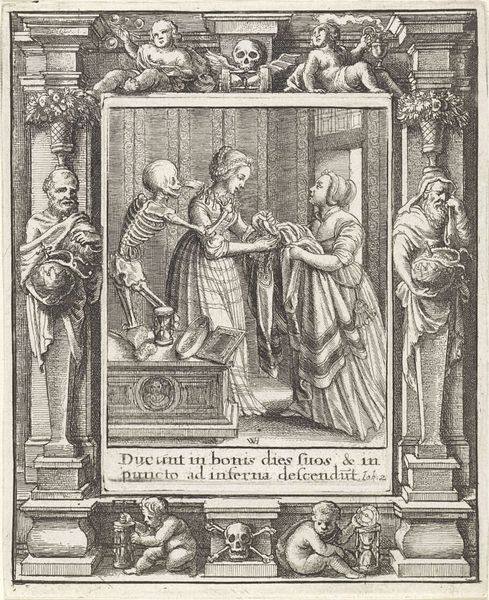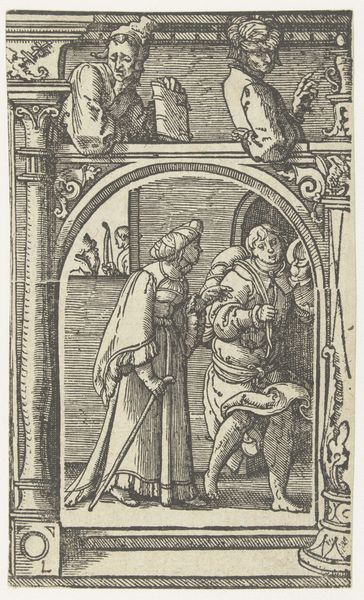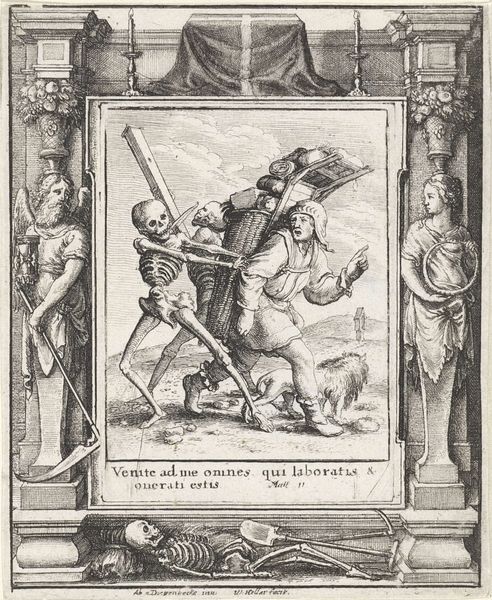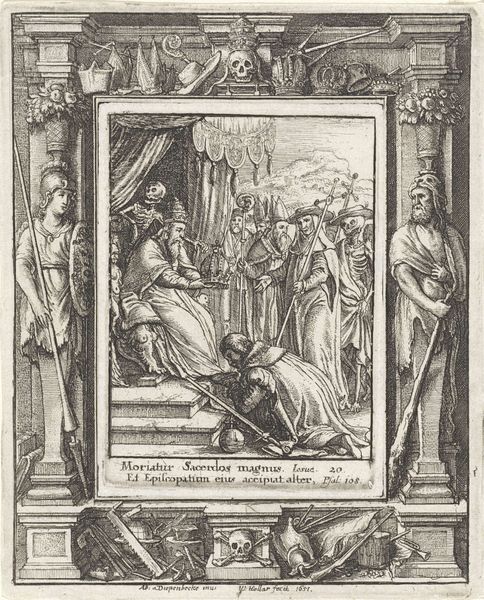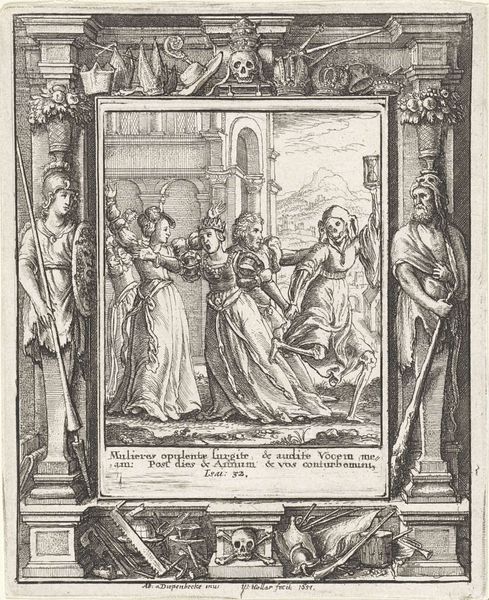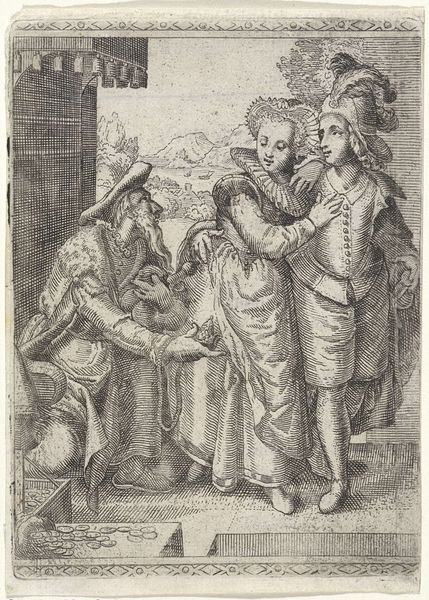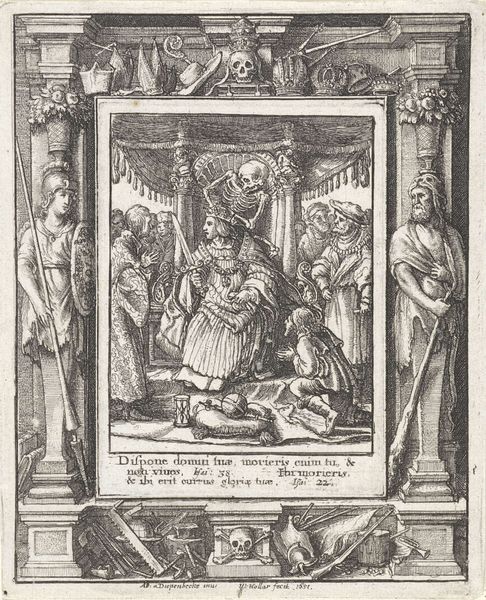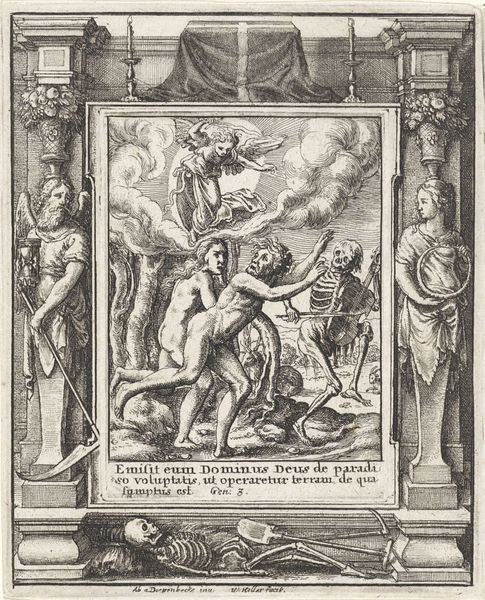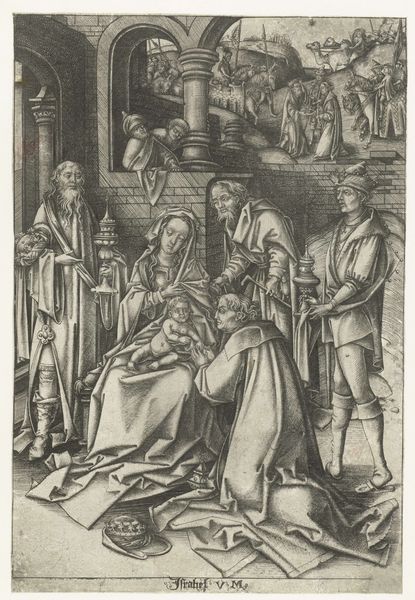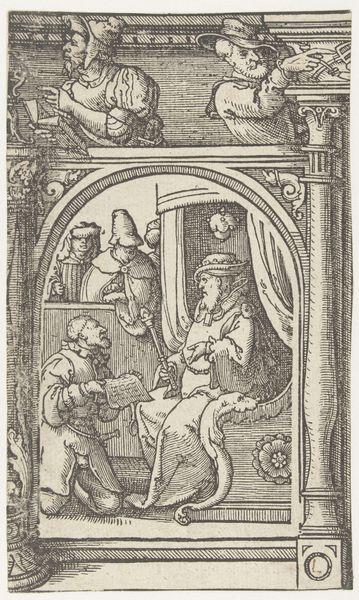
print, engraving
#
allegory
#
baroque
#
dutch-golden-age
# print
#
pen illustration
#
figuration
#
momento-mori
#
line
#
history-painting
#
engraving
Dimensions: height 115 mm, width 95 mm, height 75 mm, width 56 mm
Copyright: Rijks Museum: Open Domain
Curator: Let’s turn our attention to a rather striking print from 1651. "The Bride and Bridegroom with Death," created by Wenceslaus Hollar, currently residing here at the Rijksmuseum. The printmaking technique allows for fine details but also for dissemination among different audiences. What are your initial impressions? Editor: Honestly? It feels like a particularly macabre wedding toast. There's this unsettling yet playful energy to Death gleefully crashing their party with a drum solo. It has a dark sense of humor that only art can fully capture. Curator: Precisely. Hollar worked extensively in printmaking. As this work demonstrates, line and form dominate, which aided in reproduction. Note how the costuming is so meticulously rendered—it tells us about the couple's social status and the consumption habits of the period. The “memento mori” theme permeates this artwork. It served as a warning and a meditation. Editor: I keep getting drawn back to Death in the center of it all, he looks mischievous like he is enjoying reminding them that their love story will, in the end, have to end. What materials and processes were common for Hollar? Curator: As this engraving illustrates, Hollar frequently employed etching and drypoint in addition to engraving, using copper plates for their durability and ability to capture fine lines. It speaks to Hollar's access to workshops, collaboration with printers and publishers, and of course, the thriving art market during the Dutch Golden Age. This highlights the commodification and accessibility of art beyond painting for the wealthy, impacting social beliefs and moralizing sentiments related to daily life. Editor: So interesting to consider how this print functioned within that 17th-century context. Even today, its strangeness lingers. Thanks for making me see this artwork with new eyes! Curator: Indeed. It encourages one to reconsider material wealth, life cycles, artistic practices, and cultural context!
Comments
No comments
Be the first to comment and join the conversation on the ultimate creative platform.


